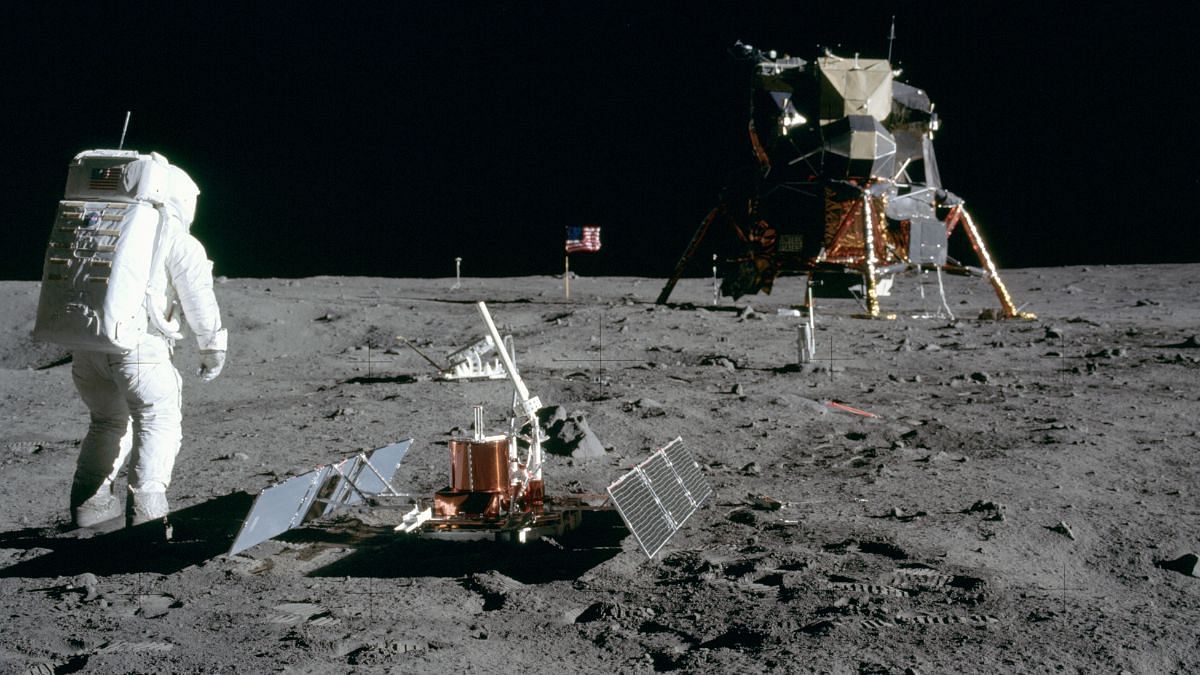Bengaluru: Today marks the 55th anniversary of the first time humans walked on the Moon. On 21 July, 1969, Neil Armstrong and Edwin “Buzz” Aldrin stepped foot on the Moon at Tranquility Base from their Eagle lunar lander module, while their crewmate Michael Collins orbited the Moon in the Columbia command module spacecraft.
The event is historic for humanity’s first ever venture outside of earth, and the major details are printed across textbooks all over the world. Famously, the astronauts went through customs and declared Moon rocks upon return, but there were many other fascinating experiences and discoveries made during and after the Moonwalk.
ThePrint brings 10 fun facts you may not know about the Moon landing:
The Moon has a smell
Upon landing, Armstrong described out loud the surface of the Moon and the texture of the soil (regolith), and as he bounced around on the Moon, the sticky powdery regolith stuck to both astronauts’ suits, causing them to later sleep with their helmets on to avoid breathing it in inside the lunar module. After they returned to the lunar module and removed their space suits, they realised that the bits of regolith on the suits were smelly. Reportedly, it smells like the air after fireworks and “wet ashes”.
The two astronauts actually brought back soil in a bag and scattered it on a surface when they repressurised the cabin to see if it would start to smoke or smolder. It did not.
Other Astronauts have reported that after their spacewalk, the smell of outer space clung to their suits. It has been described as metallic and sweet, like gunpowder, burning metal, and even burnt almond cookies.
Smells from the samples and suits disappear by the time they reach earth, due to exposure to air and moisture in storage.
Also read: Software mimicking human perception — how Noida firm gave Chandrayaan-3 rover its ‘eyes’
Parts of Wright Brothers’ plane flew to the Moon
In 1903, the Wright Brothers made history by achieving flight, paving the way for a new era of human transport. Just 66 years later, this progress enabled Neil Armstrong to reach the Moon. During his historic journey, Armstrong carried pieces of wood from the Wright Flyer in his personal kit.
These artifacts are now on display in museums.
Lunar craters were created on Earth for training
To simulate a lunar landscape for training, the US Geological Survey teamed up with NASA to blast the earth at Cinder Lake, Arizona, to create craters. The surface was already covered with basaltic remnants of lava, similar to the Moon landing site, Mare Tranquillitatis. A total of 143 craters were created to replicate the lunar terrain around the landing site. Here, the Apollo programme astronauts tested their equipment and ability to physically work on the Moon, and vehicles were also tested.
The last training exercise occurred in 1972 for the crew of Apollo 17. Since then, Disney has used the site for filming Moon settings. The craters have eroded in structure a fair bit from wind and rain, but the location is still a popular tourist destination and easily accessible.
One small step for whom?
It is often reported that upon setting foot on the soil, Armstrong said, “That’s one small step for man, one giant leap for mankind.” But Armstrong actually said, “That’s one small step for a man, one giant leap for mankind,” referring to himself as an individual quite grammatically correctly.
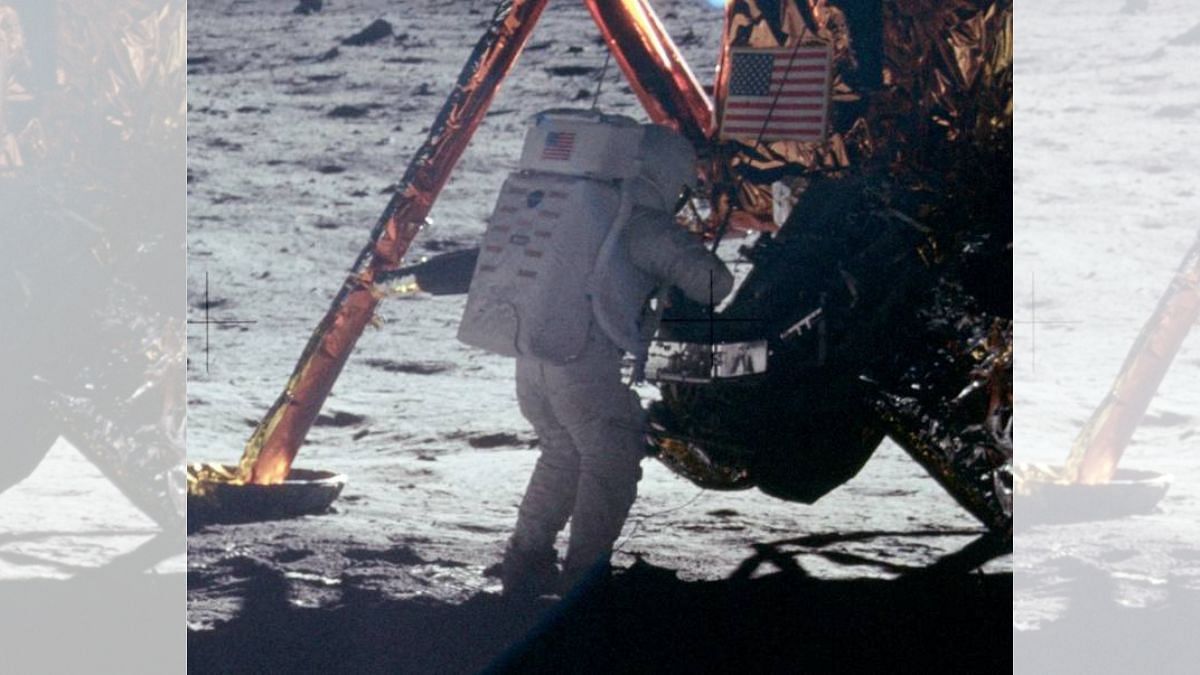
Many people reacted to his statement saying that they cannot hear the “a” article in the recording, but linguists and engineers have analysed the recordings and confirmed that Armstrong does indeed say the “a”. Thus, the quote today is mostly reported as, “That’s one small step for (a) man, one giant leap for mankind.”
Armstrong made another statement popular among the astronaut community today. When the lunar module Eagle successfully separated from command module Columbia with the two men inside, Armstrong said in elation, “The Eagle has wings!”
The Moon landing was almost aborted
The landing site for Apollo 11 was decided well in advance and the spacecraft flew there. But as they inched closer to the surface, the two astronauts realised that the surface was covered with rocks and boulders. They had to immediately navigate manually to find an alternate landing site. The Eagle only had limited fuel, and the duo made it to the surface a mere 25 seconds before fuel ran out. Had they run out fully, an automatic abort would have kicked in, forcing the probe back to command module Columbia, in which Collins was orbiting.
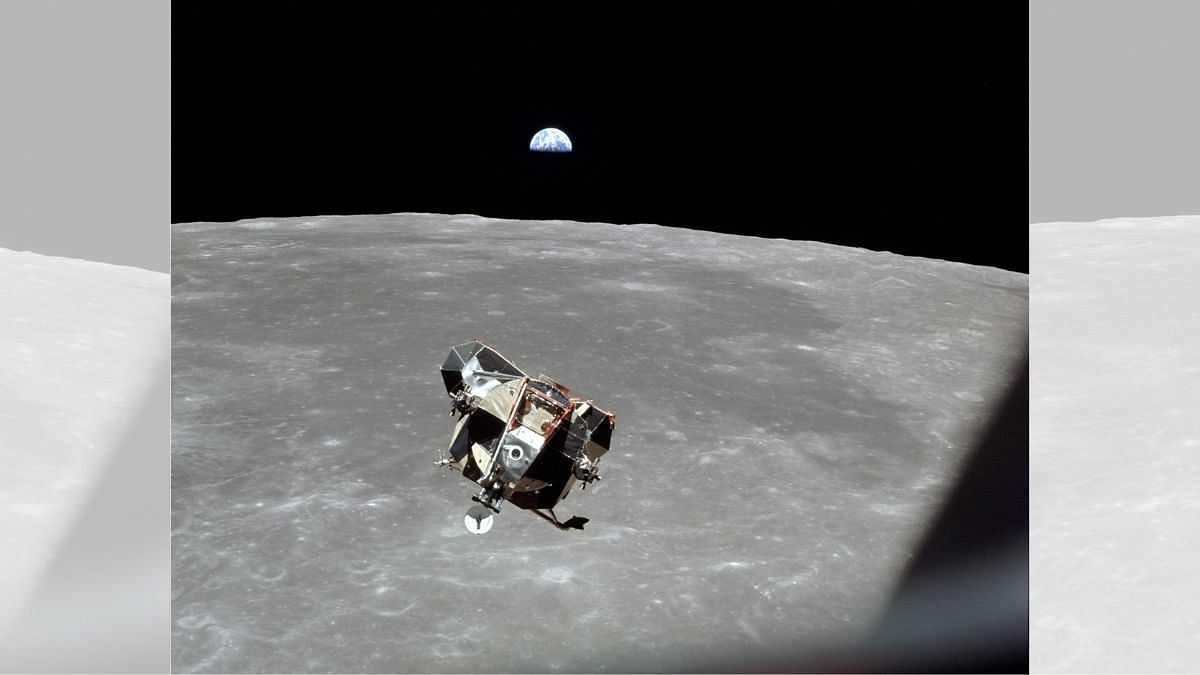
However, it was later revealed the low fuel warning that was triggered turned out to have come from fuel sloshing and touching sensors only. Armstrong’s heart rate reportedly reached 150 during descent.
The crew also faced issues as soon as they began their descent. Five minutes in, computers threw up several unexpected alarms, although the issues were resolved by the time they landed 30 minutes later.
Space infection on earth
When the trio splashed into the ocean, they were given biological isolation garments (BIG) that they put on before being assisted into the life raft. They were rubbed down with antiseptics and disinfectants, and the materials used to clean and decontaminate the astronauts was purposely sunk to the sea floor. The team flew in a helicopter to the aircraft carrier USS Hornet and were promptly moved to a quarantine facility since scientists were worried that they might carry germs of unknown origin from outer space to earth, or “Moon germs”.
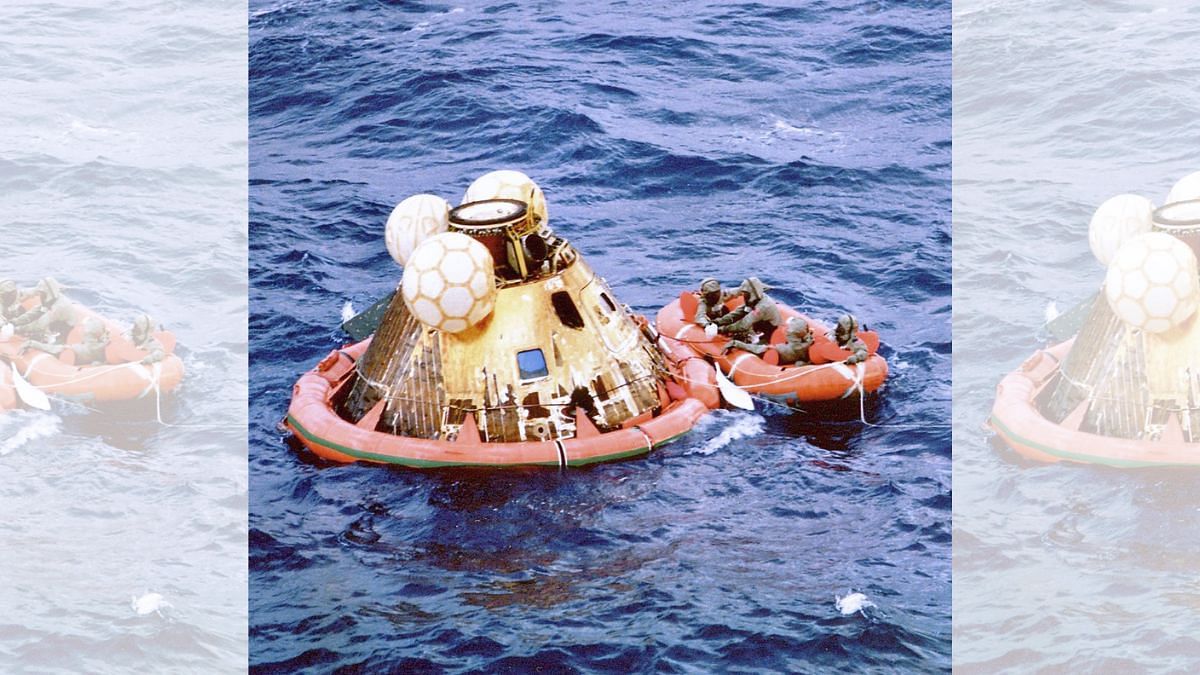
The Mobile Quarantine Facility (MQF) housed the three astronauts, a doctor, and a technician for over 60 hours while it was transported on an aircraft carrier to Pearl Harbor in Hawaii.
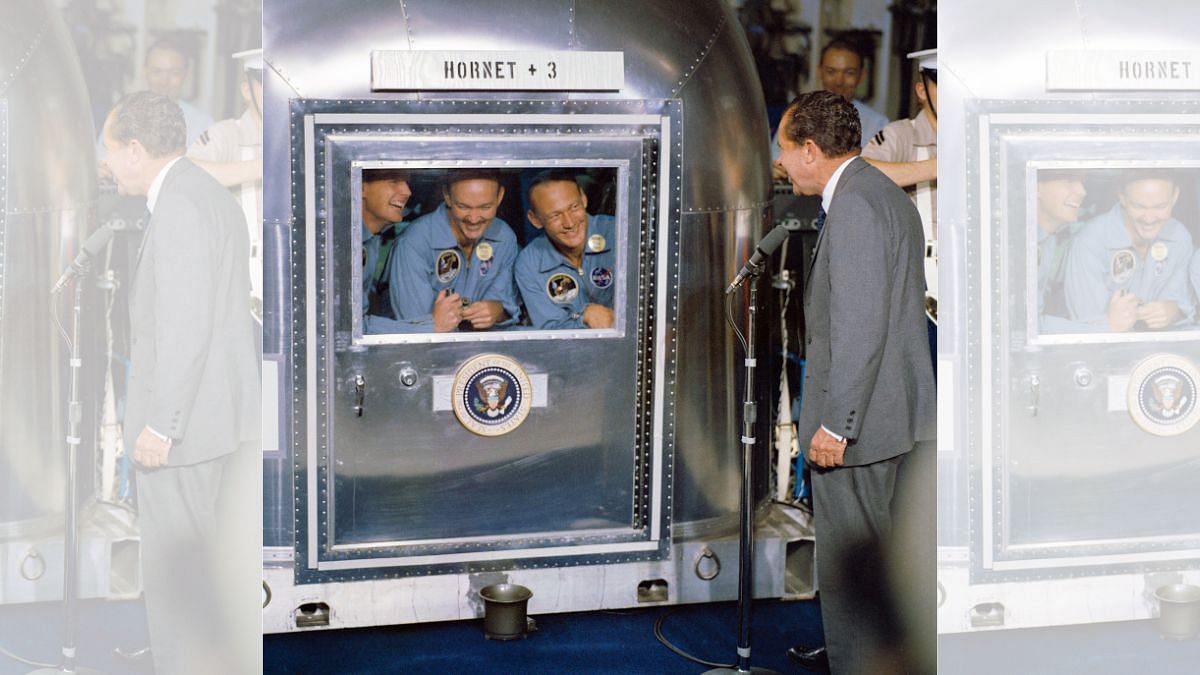
There’s poop on Moon
Beginning with Apollo 11, astronauts have left a total of 96 bags of human waste on the Moon combined. The team stored their excrement from the three-day journey in their spacecraft, and had to leave their bags of waste and soiled diapers on the Moon to reduce weight of the flight. They needed as much weight as possible to carry back lunar samples from the surface.
The bags of discarded waste are still sitting on the Moon, and are expected to become subjects of study in the future when humans can reach them again and check if microbes persisted.
Astronauts have also left many other items on the Moon. Armstrong and Aldrin left behind photos and cassettes of recordings in multiple languages. They also left behind mementos and artefacts that belonged to other astronauts around the world who had perished in space mission related accidents.
Soviet robot crashed on Moon when Apollo 11 astronauts were there
The space race was the culmination of the Cold War, and both Americans and Soviets were desperate to get to the Moon first. The Soviet Union’s (and today Russia’s) Luna programme began in the 1960s, and Luna 15 was scheduled to land on the same day as the Apollo 11 astronauts.
Luna 15 was orbiting the Moon the same time as Columbia was, and began descending after the astronauts below finished their first Moonwalk, over 500 km away. The lander crashed on the Moon a few hours before the Apollo 11 astronauts took off from the lunar surface to orbit.
Aldrin performed the first religious ritual on the Moon in secret
Astronaut Buzz Aldrin was an elder in his Presbyterian Church at the time of flight, and he performed a Christian communion on the surface of the Moon. The ceremony involved silence and thanksgiving, and he drank bread and wine in a chalice made by his local pastor.
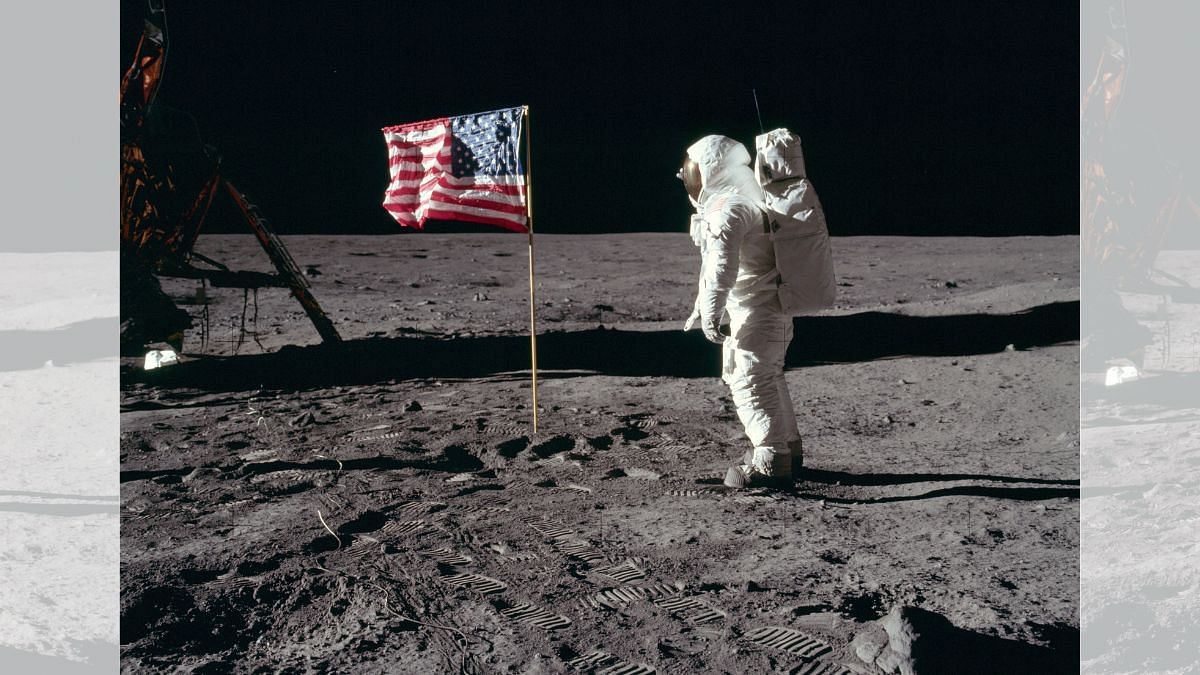
Aldrin had to perform the ceremony off air because of a lawsuit. The previous year, the first humans to orbit the Moon, the crew of Apollo 8, read from the Book of Genesis during their ninth orbit. This led to the group American Atheists suing the US government for constitutional violations.
The Genesis reading was honoured by Michael Jackson, who used the end of the crew’s reading in his song ‘HIStory’.
The flag is gone
When Armstrong and Aldrin took off from the Moon, Aldrin reported seeing the American flag he planted fall over because of the ignition gases. The flag they planted on the Moon was purchased from a convenience store, and it was not expected to survive the fierce solar radiation and heat when in contact with the surface. It had been very difficult to plant, and was only 2 inches in. The astronauts worried that it would tip over on live TV.
Images from the Lunar Reconnaissance Orbiter confirm that the flag cannot be spotted on the Moon (although Apollo 12’s limp flag is still standing).
(Edited by Zinnia Ray Chaudhuri)
Also read: Chandrayaan-3 shows more than just ISRO’s excellence. It’s the STEM catalyst India needed

